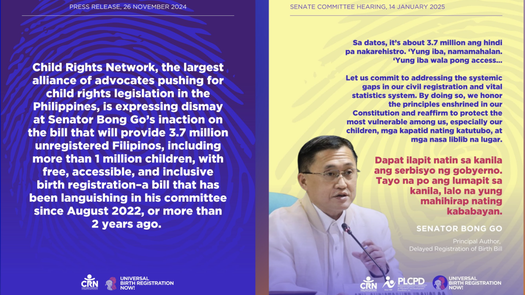July 29, 2025
GHAI is excited to announce the addition of a new chapter focused on Stillbirth Reporting to our Legal and Regulatory Review Toolkit on CRVSID. The CRVSID Toolkit, which covers a broad range of topics pertaining to Civil Registration, Vital Statistics and ID Management, is used to assist low and middle income countries in evaluating and strengthening their existing CRVSID legal frameworks. This new chapter fills a critical gap in our Toolkit, which has been used in nearly twenty countries throughout the globe, by more fully addressing how the law can help to ensure that all deaths are counted, including this important subset of prenatal deaths.
There are a variety of reasons why governments should collect information on stillbirths. Accurately counting the incidence and identifying the causes of stillbirths are an essential first step to reducing the estimated 2.7 million stillbirths that occur globally each year. Consistent information about the nature and causes of stillbirths is necessary for health system planning, resource prioritization, policy making, and improving the quality of care at the point of service delivery. Moreover, data derived from stillbirth statistics can help guide the development of public health interventions focused on preventing or decreasing the incidence of late term foetal deaths. And finally, official recognition and documentation that a stillbirth occurred can hold meaningful significance for families, in addition to facilitating the burial or cremation of their stillborn baby.
Above all else, stillbirth reporting is foundational to improving maternal and fetal health. Without knowing the prevalence and causes of stillbirths, governments are ill equipped to provide the necessary programs, interventions, trainings, and overall care that pregnant women require in order to give birth to a healthy baby. Without counting and documenting stillbirths, these deaths are invisible to the policy planners and medical professionals responsible for providing maternal and fetal care.
The new chapter on Stillbirth Reporting covers a range of topics, including key definitions, which are necessary to the creation of accurate vital statistics and for international comparability; the two internationally recommended ways of reporting stillbirths (through the civil registration system or through the health sector); guidance on which foetal deaths to report; the requirements for where, when, and by whom a stillbirth should be reported; medically certifying a stillbirth’s cause of death; and the UN recommended statistical information to gather during stillbirth reporting. All the information contained in the Toolkit, and the Stillbirth chapter specifically, is rooted in international best practices, which are based on decades and decades of observations and research by public health officials and international experts who have identified what works best, and what contributes to the most complete reporting figures, in countries throughout the world.
The importance of stillbirth registration is often overlooked in many low and middle income countries, which are often already struggling to boost their death registration rates. According to a recent report published by the World Health Organization, “most stillbirths and half of all neonatal deaths do not receive a birth certificate and are not registered.” In most cases, these losses are preventable with high-quality, evidence-based interventions delivered before and during pregnancy, during labor and childbirth, and in the crucial hours and days following a birth. However, without a systematic way of reporting these stillbirths and then creating vital statistics based on this reporting data, these preventable deaths will continue to occur in the significant numbers we see today.
The death of an unborn baby can be a highly traumatic and emotional experience for women and families. Improving the systems for reporting stillbirths is not only a prerequisite for reducing neonatal mortality, and the suffering and sadness that often follows, but it is also a way of focusing on an issue that uniquely impacts women’s health. As such, not only can boosting stillbirth reporting help to prevent these unnecessary deaths, but it can also help to promote gender equity within a government’s health care and civil registration systems.
The new stillbirth chapter was jointly authored by Lynn Sferrazza (GHAI), Olga Joos (CDC Foundation), and Chrystie Swiney (GHAI), with technical contributions from Vital Strategies, the World Health Organization, and the United National Statistics Division. Support for this project was provided by the Bloomberg Philanthropies Data for Health Initiative.



